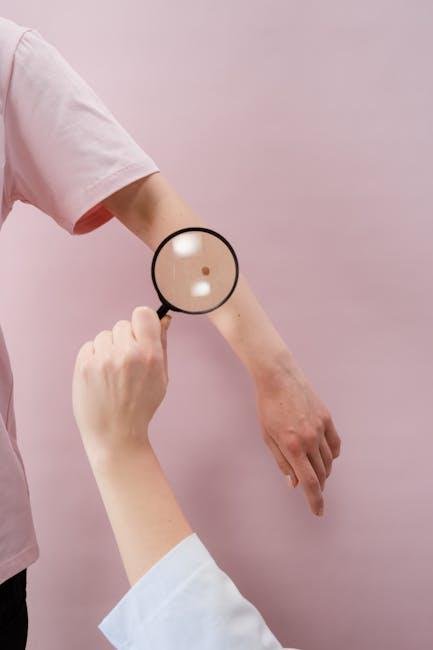Hyperpigmentation can feel like a perplexing puzzle, a shadow that dims our skinS natural glow. Whether it’s the sun’s relentless rays,hormonal changes,or the aftermath of a stubborn blemish,these brown patches and dark spots share a common thread: they can be frustratingly persistent. as we embark on a journey thru the world of hyperpigmentation, we’ll demystify the science behind these skin discolorations and explore a myriad of treatment options, from tried-and-true remedies to the latest innovations in dermatology. With clarity as our compass, we’ll separate the effective from the ineffective, guiding you to make informed choices on your quest for a more even skin tone. So, let’s illuminate the path forward in “Hyperpigmentation 101: What Works and What Doesn’t.”
Understanding Hyperpigmentation: Causes and Types
Hyperpigmentation is a common skin condition characterized by patches of skin that are darker than the surrounding areas. This discoloration occurs due to an overproduction of melanin, the pigment responsible for skin color. Various factors can trigger this process, including:
- Sun Exposure: UV rays can stimulate melanin production, leading to sunspots.
- hormonal Changes: Conditions like pregnancy or hormonal therapy may cause melasma.
- Post-Inflammatory Changes: Dark spots can appear after injuries or inflammatory skin conditions.
- Certain Medications: Some drugs can increase sensitivity to sunlight, resulting in hyperpigmentation.
Understanding the types of hyperpigmentation can also help in identifying effective treatments. The most common forms include:
- Sunspots: Usually found on areas frequently exposed to the sun.
- Melasma: Frequently enough occurs during hormonal fluctuations, especially in women.
- Post-Inflammatory Hyperpigmentation (PIH): Resulting from skin trauma or conditions like acne.
- Lentigines: Flat brown or black spots due to aging and sun exposure.

Effective Treatment options: What Really Works
When tackling hyperpigmentation, various treatment options can lead to noticeable improvements. Among the most effective methods are topical agents that target melanin production. These include ingredients such as:
- Hydroquinone: A skin-lightening agent that inhibits melanin synthesis.
- Retinoids: Known for promoting cell turnover and helping to fade dark spots.
- Vitamin C: An antioxidant that not only evens skin tone but also brightens complexion.
- Azelaic Acid: Particularly beneficial for treating acne-related hyperpigmentation.
In addition to topical treatments, procedural interventions can provide meaningful results, especially for severe cases. Popular options include:
- Chemical peels: Removal of the top layers of skin to diminish pigmentation.
- Laser therapy: Uses concentrated light to target dark spots without damaging surrounding tissues.
- Microneedling: Promotes collagen production while aiding in the absorption of topical treatments.
| Method | Effectiveness | Timeframe |
|---|---|---|
| Topical Agents | Moderate to High | 4-12 weeks |
| Chemical Peels | High | Immediate to 4 weeks |
| Laser Therapy | High | Immediate to 6 weeks |
| Microneedling | Moderate | 4-8 weeks |

At-Home Remedies: Do They Deliver Results?
many individuals turn to at-home remedies as a first line of defense against hyperpigmentation, seeking natural solutions that promise to lighten dark spots and even out skin tone. While the appeal of DIY treatments is undeniable due to their accessibility and cost-effectiveness, the efficacy of these methods varies widely. some popular remedies include:
- Lemon Juice: Often touted for its natural bleaching properties, it can cause irritation if used excessively.
- Honey and turmeric Mask: Known for its soothing and anti-inflammatory properties, this concoction can definitely help brighten skin over time.
- Aloe Vera: Common for its moisturizing benefits, aloe vera gel might aid in reducing pigmentation with consistent use.
While these home treatments may provide mild improvements for some individuals, it’s crucial to manage your expectations. Unlike clinical options, at-home remedies generally take longer to show results, if at all. Furthermore, the effectiveness can depend on skin type, the nature of the hyperpigmentation, and consistency of application. Below is a simple comparison of various at-home remedies, focusing on their effectiveness and potential risks:
| Remedy | Effectiveness | potential Risks |
|---|---|---|
| Lemon Juice | Moderate | Skin sensitivity, sun damage |
| Honey & Turmeric | Moderate | Allergic reactions |
| Aloe vera | Low to Moderate | Possible minimal irritation |

Preventing Future Pigmentation: Tips for Healthy Skin
To keep your skin looking radiant and to minimize the risk of hyperpigmentation, adopting a proactive skincare routine is essential. Sunscreen should be your best friend; apply a broad-spectrum SPF of at least 30 daily, even on cloudy days or when you’re indoors. Incorporating products with antioxidants like Vitamin C can help fight free radicals, while exfoliation using mild AHAs or bhas can encourage skin cell turnover, clearing away old cells that may contribute to dark spots. Don’t forget to stay hydrated and maintain a balanced diet, rich in vitamins and minerals; foods high in Omega-3 fatty acids and antioxidants can nourish your skin from the inside out.
Additionally, be mindful of your skincare habits. avoid picking at blemishes, as this can lead to post-inflammatory hyperpigmentation.Consider including retinoids in your nighttime routine—they stimulate collagen production and promote cell renewal, helping to fade existing pigmentation. When exploring cosmetic treatments, ensure you consult with a skincare professional who understands your skin type and concerns. Keeping track of your skin’s reaction to different products is crucial, so create a simple table to monitor your progress:
| Product | Application Frequency | Notes |
|---|---|---|
| Sunscreen | Daily | Reapply every 2 hours |
| Vitamin C Serum | Daily | Morning routine, follow with SPF |
| Retinoid | 2-3 times a week | Use at night; apply moisturizer |
wrapping Up
As we draw the curtain on our exploration of hyperpigmentation, it’s clear that while this skin condition may present challenges, knowledge is a powerful ally. Understanding the various treatments available, from topical solutions to professional procedures, empowers you to make informed decisions tailored to your unique skin. Remember, what works for one person may not work for another, and patience is key in this journey.
The quest for even skin tone is as much about self-care as it is indeed about aesthetics, and embracing your skin in all its hues is a vital part of that process. As you navigate the options and strategies outlined in this guide, keep in mind that the path to clarity is as much about learning from the experience as it is about achieving the desired results. So go forth with confidence,equipped with the insight needed to tackle hyperpigmentation,and let your skin tell the story of resilience and renewal.

